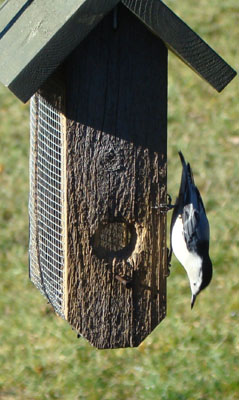
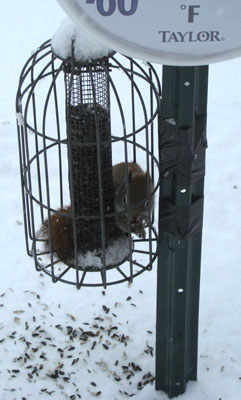


|

|

|
| The White-breasted Nuthatch (Sitta carolinensis) is larger than its Red-breasted cousin (Sitta canadensis). | The squirrel finally figured out how to slither into the "squirrel-proof" feeder. | A female Northern Cardinal (Cardinalis cardinalis) feeding during a lake effect snowfall. |
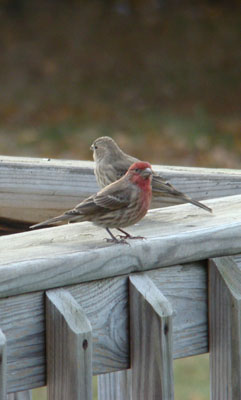
|
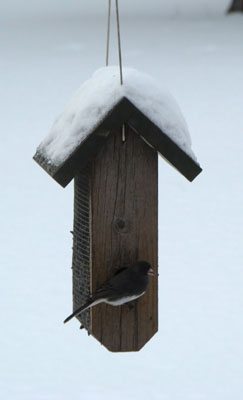
|
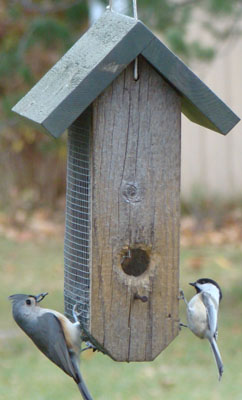
|
| Male and female House Finches (Carpodacus mexicanus) | The smaller Dark-eyed Juncos (Junco hyemalis) feed on the ground, while the larger ones use the feeder. | Tufted Titmouse (Baeolophus bicolor) and Black-capped Chickadee (Poecile atricapilla) |
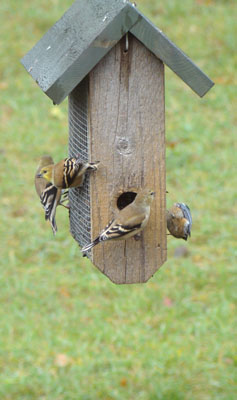
|

|

|
| The American Goldfinches (Carduelis tristis) are in their winter colors now. The males will turn bright yellow in the sping. | Mourning Dove (Zenaida macroura) | This Striped Skunk (Mephitis mephitis) has been getting more brazen about his daytime visits. |
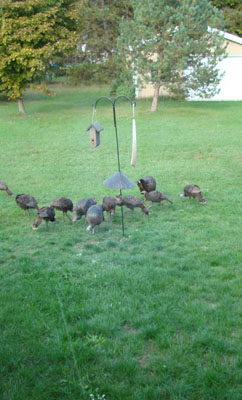
|

|
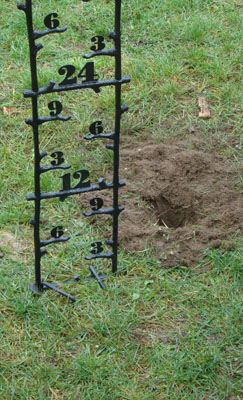
|
| 18 Wild Turkeys (Meleagris gallopavo) passed through to feed. | These are three of five White-tailed deer (Odocoileus virginianus) grazing by my pole barn late one afternoon during our first snow flurries of the season. | The skunk has been digging deeper for grubs. I'm going to bury an ammonia-soaked paper rag and hope he goes somewhere else. (Follow-up note: He did.) |

|
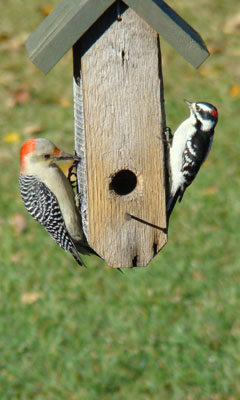
|
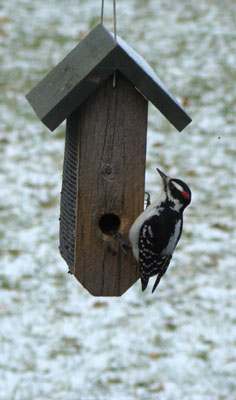
|
| Red-breasted Nuthatch (Sitta canadensis) and two Black-capped Chickadees (Poecile atricapilla) | Red-bellied Woodpecker (Melanerpes carolinus) and Downy Woodpecker (Picoides pubescens). I earlier misidentified the Red-bellied Woodpecker as a Common Flicker (Colaptes auratus). | The Hairy Woodpecker (Picoides villosus) is similar to the Downy, but bigger. |
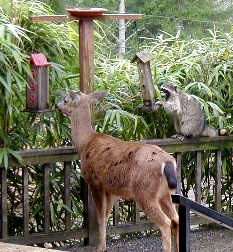

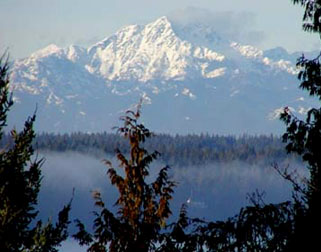
| These are examples of the wildlife that we had in Washington. The Columbian black-tailed deer (Odocoileus hemionus columbianus) and Northern raccoon (Procyon lotor) were helping themselves at my birdfeeders on the deck of my Herron Island house, while the killer whale (Orcinus orca) was one of 19 from the San Juan Islands up north who visited nearby Dyes Inlet for six weeks and provided some amazing kayaking experiences. I took the shot of the Olympic Mountains from just outside my kitchen window using a zoom lens. |